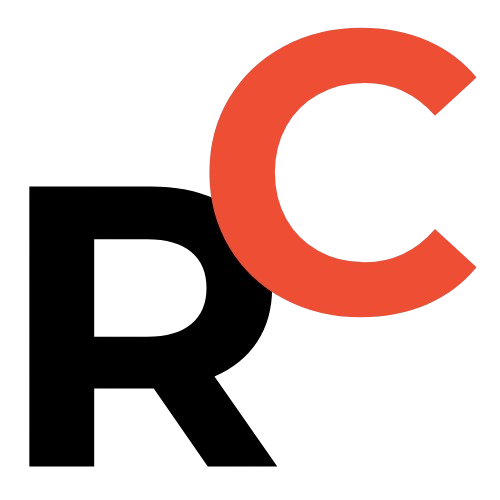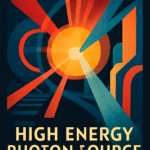“`html
Key Points
- The demand for lightweighting in humanoid robots is driving a surge in interest and investment in PEEK materials, leading to the PEEK Materials Concept Index skyrocketing by 5.79%.
- Several key Chinese A-share companies, including Zhongyan (中研股份), Huitong (会通股份), and Kingfa Technology (金发科技), are actively engaged in PEEK material production or R&D for robotics, though many are also focused on medical and automotive sectors.
- Kingfa Technology (金发科技) is a notable player, with strategic investments (e.g., <1% in Unitree Robotics (宇树科技)) and dedicated R&D, actively collaborating with major robotics firms.
- While an “inevitable trend” for lightweighting, with Chinese domestic PEEK demand forecasted to reach 5,079 tons by 2027, a key challenge is PEEK’s high cost, being 20 to 40 times more expensive than common 3D printing materials.
- The market is currently driven by speculation on future expectations rather than immediate high demand, and cost reduction through simplified manufacturing processes is crucial for large-scale adoption of PEEK in robotics.
PEEK materials are suddenly the hottest topic in the world of high-tech manufacturing, and it’s all thanks to the explosive trend of lightweighting in humanoid robots.
The core idea is simple: to make robots more efficient, agile, and safe, they need to shed weight. This has kicked off a gold rush for advanced materials like PEEK (Polyether Ether Ketone), carbon fiber, and titanium alloys.
Investors are taking notice, and the market is moving fast.
Market Mania: PEEK Stocks Hit All-Time Highs
The hype is real. Just look at the numbers.
As of August 6, 2025, the PEEK Materials Concept Index skyrocketed by 5.79%, smashing its previous historical high.
Here’s a snapshot of the action:
- Xinhans Hantong New Material (Xīnhàn Xīncái 新瀚新材): Nailed two consecutive daily limit increases.
- Zhongyan (Zhōngyán 中研股份), Huitong (Huìtōng Gǔfèn 会通股份), and Kingfa Technology (Jīnfā Kējì 金发科技): All saw significant gains.
The consensus on the street is clear: with massive demand coming from both humanoid robots and new energy vehicles, PEEK is positioned for insane growth. Its lightweight yet ultra-strong properties make it a game-changer.

The Key Players: Who’s Building with PEEK?
As PEEK proves its worth in real-world applications, a handful of China’s A-share listed companies are getting serious about staking their claim in the industry.
Here’s the breakdown of who’s doing what.
Zhongyan (Zhōngyán 中研股份)
- PEEK Fit for Robotics: Confirmed PEEK is ideal for robot joints and gears.
- Current Collaborations: No direct collaborations with humanoid robot companies yet.
- Future Engagement: Open to potential future engagement in the robotics field.
- Primary Business: Remains focused on medical and automotive applications.
A rep from Zhongyan acknowledges the hype around humanoid robots is likely boosting their stock.
They confirm that PEEK is a perfect fit for a robot’s joints and gears.
But they’re keeping it real: “Currently, the company does not have direct collaborations with companies in the humanoid robot field, but future engagement is possible. Our primary business remains focused on medical and automotive applications.”
Huitong (Huìtōng Gǔfèn 会通股份)
- PEEK and Carbon Fiber Materials: Launched in 2024 to support “plastic replacing metal” trend in robotics.
- TPE Soft Rubber Solutions: Already promoting solutions for robot hand components in the market.
Huitong has been ahead of the curve, launching PEEK and carbon fiber-reinforced materials back in 2024 to meet the “plastic replacing metal” demand in robotics.
Kingfa Technology (Jīnfā Kējì 金发科技)
As a major player in modified plastics, Kingfa is actively exploring humanoid and quadruped robots.
Their high-performance PPA (high-temperature nylon) and PEEK materials are already being used in critical components for robot dogs and humanoids.
Here’s what we know about their strategy:
- Strategic Investment: They hold a small stake (less than 1%) in the well-known robotics firm Unitree Robotics (Yǔshù Kējì 宇树科技).
- Dedicated R&D: They’ve set up a specialized R&D team just for humanoid robot materials.
- Active Collaborations: Kingfa is working directly with robotics leaders like Unitree Robotics, Deep Robotics (Yúnshēnhuì 云深处), and Zizhi Robotics (Zhìyuán Jīqìrén 智元机器人) on material development. Some are already receiving supplies in bulk.
Their take is pragmatic: “In the short term, this business will have limited contribution to the company’s performance, but in the long run, the humanoid robot sector is expected to become an important new growth point for the company.”
Guangdong Wote Advanced Materials (Wòtè Gǔfèn 沃特股份)
- PEEK Production: Production line started trial runs late last year; official production began in May.
- Subsidiary (Zhejiang Kesai): Already producing PEEK profiles for robotics and semiconductor clients.
- Current Stage in Robotics: Early stages, collaborating with clients on product validation.
- Projected Robotics Shipments: Limited volume expected by 2025; seen as a future growth driver.
- Strategic Diversification: Not solely focused on humanoid robotics.
Guangdong Wote is officially in the game. Their PEEK synthetic resin production line started trial runs late last year and got the green light for official production in May.
Their subsidiary, Zhejiang Kesai (Zhèjiāng Kēsài 浙江科赛), is already producing PEEK profiles for clients in robotics and semiconductors.
Right now, they’re in the early stages, collaborating with clients on product validation. They expect a limited volume of shipments in the robot field by 2025 but see it as a future growth driver. They’re also smart to point out they aren’t putting all their eggs in the humanoid robot basket.

Resume Captain
Your AI Career Toolkit:
- AI Resume Optimization
- Custom Cover Letters
- LinkedIn Profile Boost
- Interview Question Prep
- Salary Negotiation Agent

The Billion-Dollar Vision vs. The Cold, Hard Reality
So, what’s the big picture here? The “hot” and “cold” aspects of the PEEK boom.
The Hot Side: A Massive, Untapped Market
A recent report from China International Capital Corporation (CICC) (Zhōngjīn Gōngsī 中金公司) calls the lightweighting of humanoid robots an “inevitable trend.”
Titans like Tesla and Boston Dynamics are obsessed with it. Lighter robots mean:
- Longer battery life
- Faster, smoother movements
- Better overall performance
- Enhanced safety
PEEK is expected to be a key ingredient in this revolution, with analysts predicting a market worth hundreds of billions of RMB ($13.8 billion USD).
Data from Sullivan Consulting backs this up, forecasting that domestic demand for PEEK in China will jump from 2,334 tons in 2022 to 5,079 tons by 2027. That’s a compound annual growth rate of 16.8%.
Sinolink Securities (Zhèshāng Zhèngquàn 浙商证券) adds that domestic Chinese manufacturers have an edge in price and speed, putting them in a prime position to dominate market share as robot adoption accelerates.
The Cold Side: The Crippling Cost of PEEK
Here’s the reality check: PEEK is incredibly expensive.
The complex synthesis process keeps costs high, creating a huge barrier to mass adoption.
An industry insider breaks it down with a stunning example from the 3D printing world:
- PEEK Filaments: Roughly ¥1,200-¥1,800 RMB ($165-$247 USD) per kilogram.
- Standard PLA/ABS Filaments: A mere ¥50-¥100 RMB ($6.90-$13.80 USD) per kilogram.
Bottom line: PEEK is 20 to 40 times more expensive than common 3D printing materials.
A rep from Guangdong Wote wisely pointed out that for many applications, like a simple home service robot, PEEK is overkill. Cheaper composites like PPA or PPS offer a much better balance of cost and performance.
“When general materials can meet the needs,” they said, “customers may consider whether to choose PEEK materials.”

Hype vs. Reality: Is the Market Getting Ahead of Itself?
- Price Decrease: ¥100 RMB ($13.80 USD) to several hundred RMB per kilogram.
- Reason: Acknowledging the need for greater accessibility.
A brokerage firm source puts it bluntly: capital is speculating on future expectations, not current market demand.
While some companies are shipping PEEK samples for robot components, the industry is still in its infancy. There’s a real risk that short-term production capacity could vastly outpace what the market can actually absorb.
The path forward seems clear. An industry insider noted that if the manufacturing process can be simplified, costs will drop, and large-scale adoption will become a reality.
In a promising sign, one PEEK manufacturer already cut its prices in 2024 by ¥100 RMB ($13.80 USD) to several hundred RMB per kilogram on certain products, acknowledging the need to make the material more accessible.
The future of robotics may be lightweight, but the path to mass adoption for PEEK materials will depend entirely on balancing its premium performance with practical, real-world costs.

Find Top Talent on China's Leading Networks
- Post Across China's Job Sites from $299 / role, or
- Hire Our Recruiting Pros from $799 / role
- Qualified Candidate Bundles
- Lower Hiring Costs by 80%+
- Expert Team Since 2014
Your First Job Post

References
- 人形机器人轻量化趋势下PEEK材料受热捧 多家上市公司透露业务新进展 – Eastmoney.com
- Official Website – Cailian Press (财联社)
- Official Website – Unitree Robotics
- Official Website – Deep Robotics
“`




